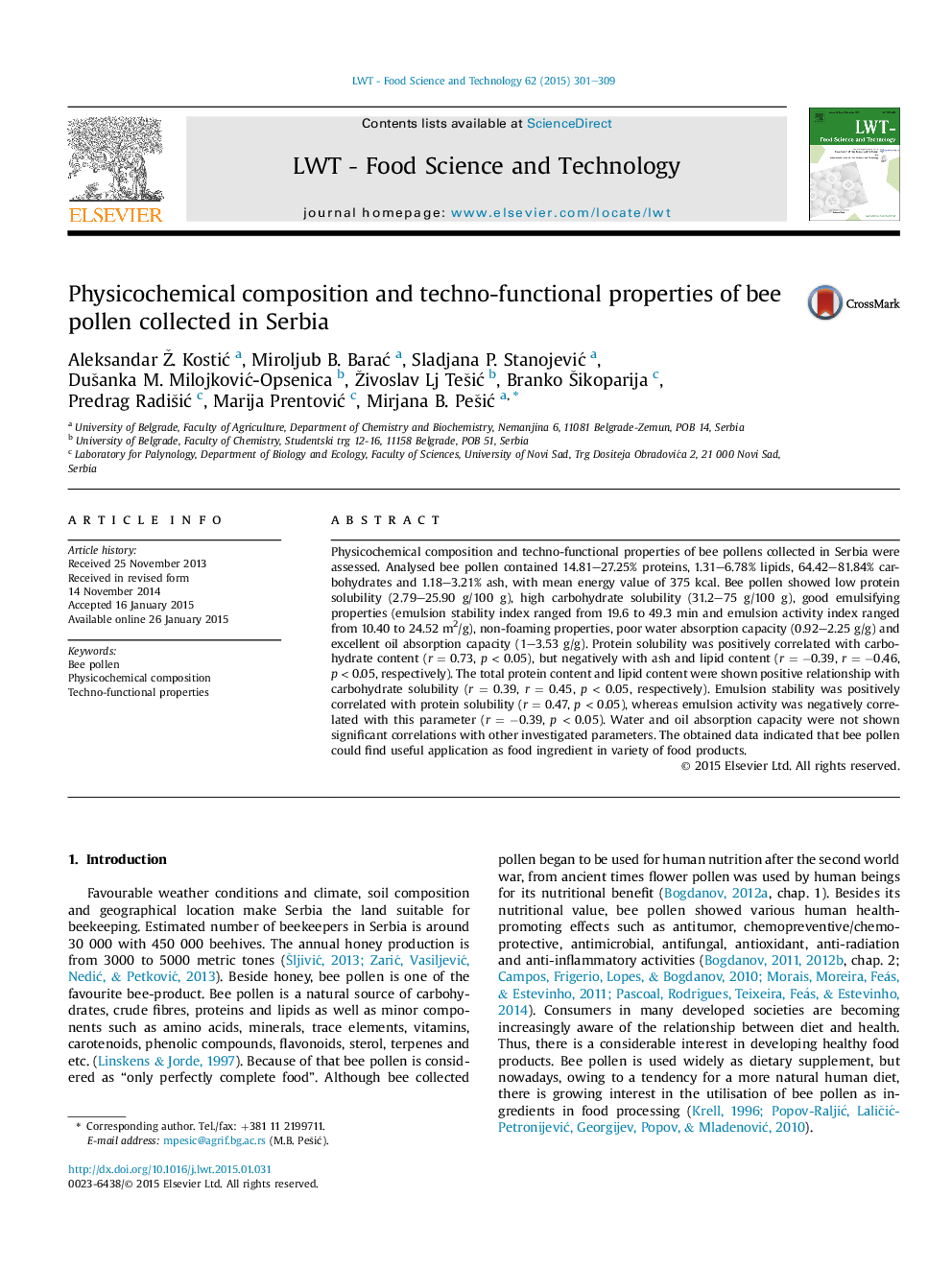| Article ID | Journal | Published Year | Pages | File Type |
|---|---|---|---|---|
| 6401342 | LWT - Food Science and Technology | 2015 | 9 Pages |
Abstract
Physicochemical composition and techno-functional properties of bee pollens collected in Serbia were assessed. Analysed bee pollen contained 14.81-27.25% proteins, 1.31-6.78% lipids, 64.42-81.84% carbohydrates and 1.18-3.21% ash, with mean energy value of 375 kcal. Bee pollen showed low protein solubility (2.79-25.90 g/100 g), high carbohydrate solubility (31.2-75 g/100 g), good emulsifying properties (emulsion stability index ranged from 19.6 to 49.3 min and emulsion activity index ranged from 10.40 to 24.52 m2/g), non-foaming properties, poor water absorption capacity (0.92-2.25 g/g) and excellent oil absorption capacity (1-3.53 g/g). Protein solubility was positively correlated with carbohydrate content (r = 0.73, p < 0.05), but negatively with ash and lipid content (r = â0.39, r = â0.46, p < 0.05, respectively). The total protein content and lipid content were shown positive relationship with carbohydrate solubility (r = 0.39, r = 0.45, p < 0.05, respectively). Emulsion stability was positively correlated with protein solubility (r = 0.47, p < 0.05), whereas emulsion activity was negatively correlated with this parameter (r = â0.39, p < 0.05). Water and oil absorption capacity were not shown significant correlations with other investigated parameters. The obtained data indicated that bee pollen could find useful application as food ingredient in variety of food products.
Related Topics
Life Sciences
Agricultural and Biological Sciences
Food Science
Authors
Aleksandar Ž. KostiÄ, Miroljub B. BaraÄ, Sladjana P. StanojeviÄ, DuÅ¡anka M. MilojkoviÄ-Opsenica, Živoslav Lj TeÅ¡iÄ, Branko Å ikoparija, Predrag RadiÅ¡iÄ, Marija PrentoviÄ, Mirjana B. PeÅ¡iÄ,
